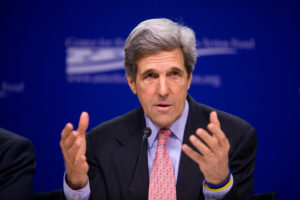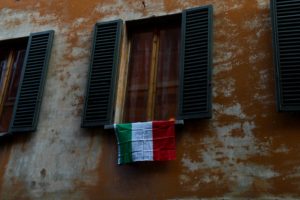Domino’s Pizza announced in December that it plans to open 880 restaurants in Italy by 2030. It’s an idea that people have found offensive, tragic and absurd. One individual on Twitter likened it to “bringing ice to the Eskimo’s.”
As of last November, 28 Domino’s Pizzerias operated in Italy, mainly near the cities of Rome, Turin and Milan. The company has said that it wants to control 2 percent of Italy’s pizza market, which in 2018 brought in 24 million euro, up 2.8 percent from 2017.
Domino’s presence in Italy is evidence of a growing taste for American fast food, not only in Italy but across Europe. In 2017, McDonald’s was operating 8,400 restaurants in 39 European countries. Pizza Hut is planning to expand its hold in Central and Eastern Europe by more than 300 restaurants, and in 2016 Taco Bell announced that it wanted to operate 70 restaurants in Spain by 2020. It recently opened its first two restaurants in Portugal.
Sometimes, the expansion of American franchises brings a novelty food into European markets, such as Kentucky Fried Chicken. Other times, however, what the franchises have to offer are Americanized versions of a delicacy that was invented—and, some would argue, perfected—by the country in which the franchise is expanding.
What generally happens when an American franchise tries to bring a modified version of a cuisine back to the country it originated in?
Taco Bell’s attempts to break into the Mexico market, first in 1992 and then again in 2007, completely flopped. In 2018, however, when the American Chinese chain P.F. Chang’s opened its first restaurant in Shanghai, the restaurant became an extremely popular novelty, drawing people in with the promise of an “Americanized” version of Chinese food.
In Italy, this scenario has played out not only with Domino’s, but also with Starbucks, which, to much consternation, entered the Italian market in 2018 with a café in Milan. The idea of bringing Starbucks coffee to Italy, arguably the epicenter of gourmet coffee, was met with the same skepticism that Domino’s faced when it opened its first restaurant in October of 2015. Both franchises have made an effort to tread lightly. Starbucks CEO Howard Schultz spoke of coming to Italy with “humility and respect,” and both companies have made an effort to adjust the quality of their ingredients and their marketing strategies to cater to Italian demands.
Delivery is a big part of Domino’s marketing strategy in Italy, and it makes up 60 percent of the pizzeria’s profits there. It is the only multinational company in Italy to have signed the Carta di Bologna, which grants delivery people a minimum wage and outlines their rights. This has led many Italians to praise the company’s policies. Alessandro Lazzaroni, the CEO of Domino’s Pizza in Italy, emphasized the company’s policies allowing employees to move up in rank.
“[Someone] who begins as a delivery driver can become a restaurant professional, passing to the role of store manager, area manager or even franchise owner,” he said in an interview with Reno News.
Lazzaroni also professed a commitment to use local ingredients in the company’s restaurants, such as bufala mozzarella, wheat grown in Italy, tomato sauce and Parma ham. But not everyone is convinced that Italian products alone, in the hands of Domino’s, will make a pizza of the quality that Italians demand. The Italian website Gambero Rosso, which covers food, wine and travel in Italy, said that “pizza purists, in front of the product that Domino’s proposes, may turn up their noses.” They further described Domino’s pizza as “a pizza markedly non-artisanal. Where mozzarella, sausage, pepperoni, onions and mushrooms can live together on the same pizza. As American taste teaches.”
In a humorous review of Domino’s from The Italian website Dissapore, which writes about food in Italy, the reviewer highlighted some of the discrepancies between American and Italian mindsets around pizza—not only regarding the pizza itself (which he found far too greasy), but the culture surrounding it. For example, the reviewer commented on the American combination of pizza and Coca-Cola, saying that he hadn’t realized that the drink was meant to help digestion and expressing trepidation that such help might be necessary. When the website offered the option of adding a side to his order, like a chicken stick, his response was, “God forbid. We’re good.”
No other American pizza brand has entered the Italian market—Pizza Hut, Little Caesars and Sbarro have all shied away from it. Lazzaroni has said that the chain is focusing on Northern Italy; the South remains too difficult of a market to expand into. Part of this may be the fierce pride that southern Italians take in their pizza. In 2017, UNESCO added the art of Neapolitan pizza-making to its world heritage list.
According to Money.it, Domino’s owns 16,000 pizzerias in 85 countries. More than half of Domino’s revenue, about 6.9 billion dollars,comes from stores outside the U.S. However, its success hasn’t been uniform around the world. The franchise recently closed its operations in Sweden, Norway, Switzerland and Iceland—high labor costs, a general mistrust of international chains and a low market for delivery contributed to the failure.
It’s too soon to tell how Domino’s bid to expand will work out in Italy. While some are calling it “the end of civilization,” the restaurants have actually found some popularity. In March, the company will be hosting a “Franchising Road Show” in five Italian cities in order to promote the opening of more restaurants.
Photo licensed for reuse.






Be First to Comment